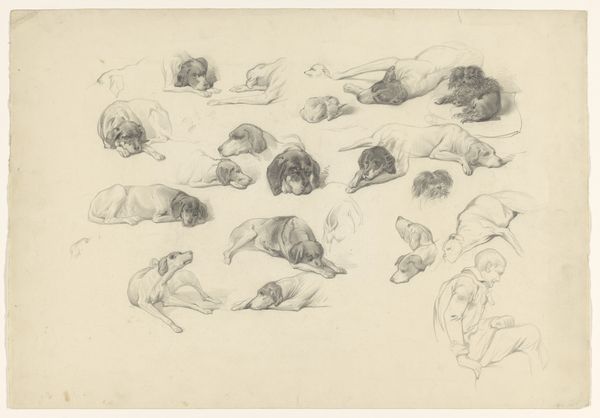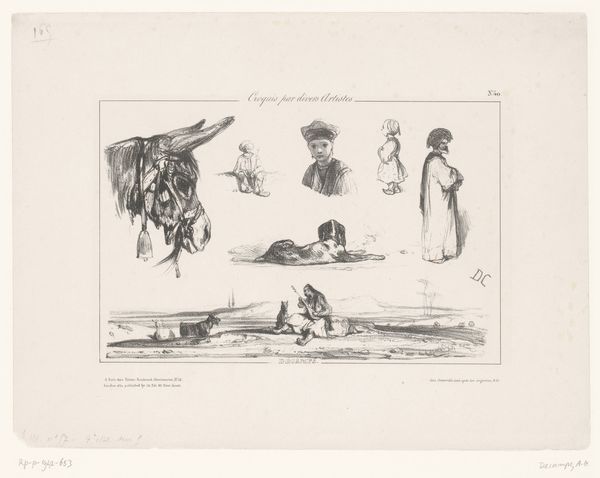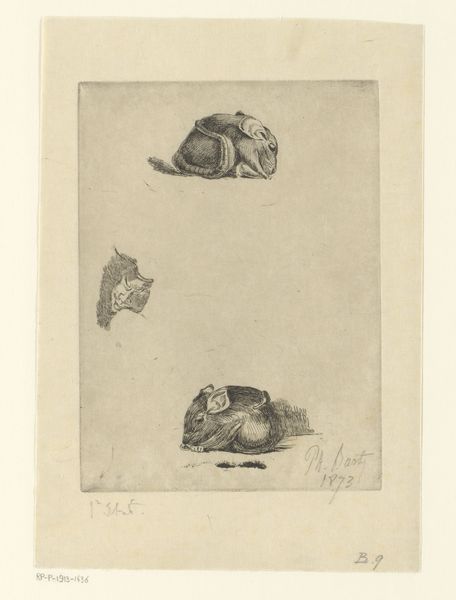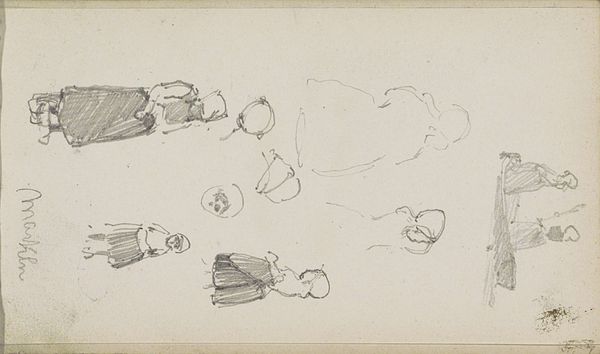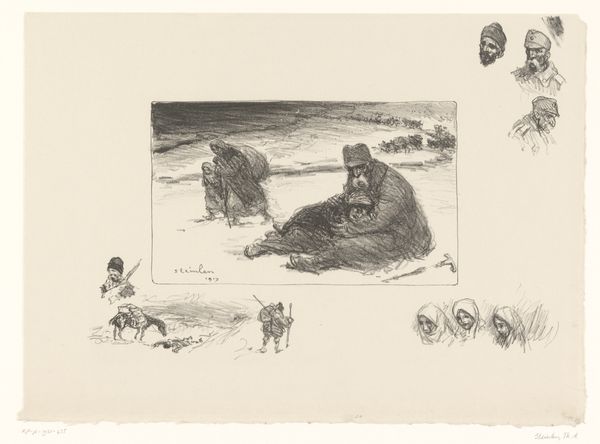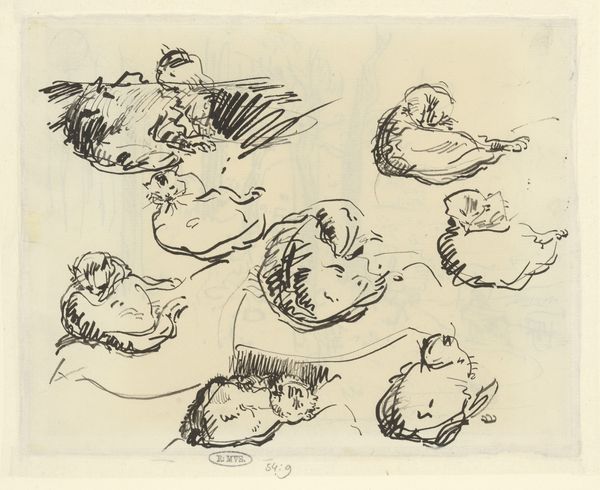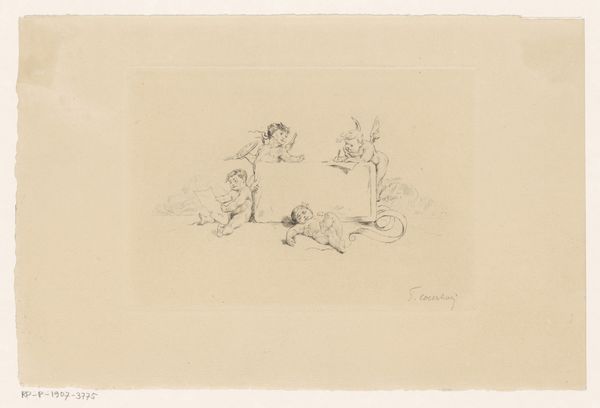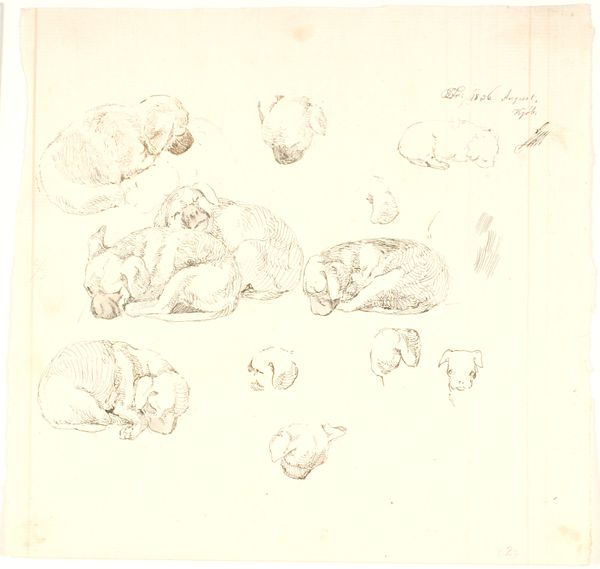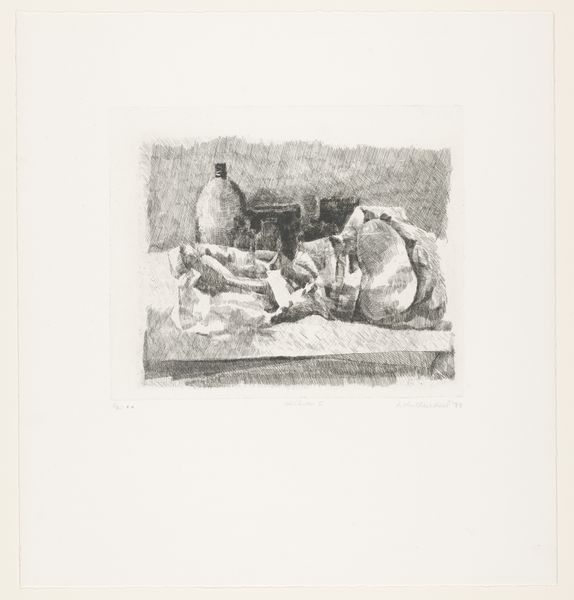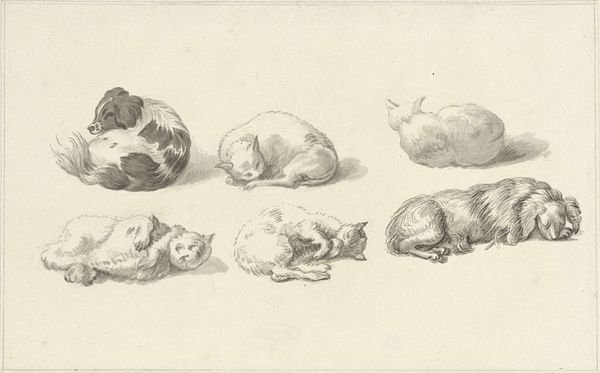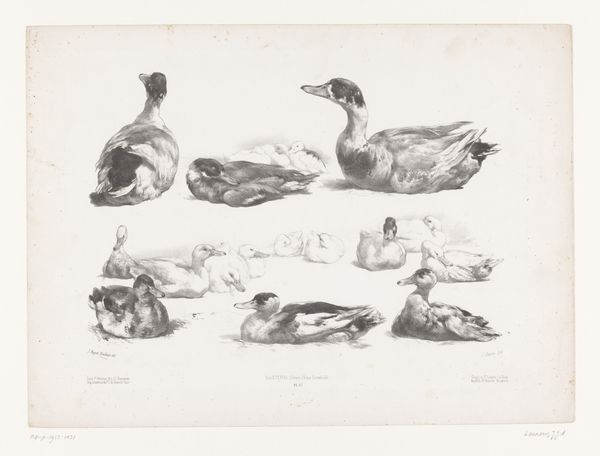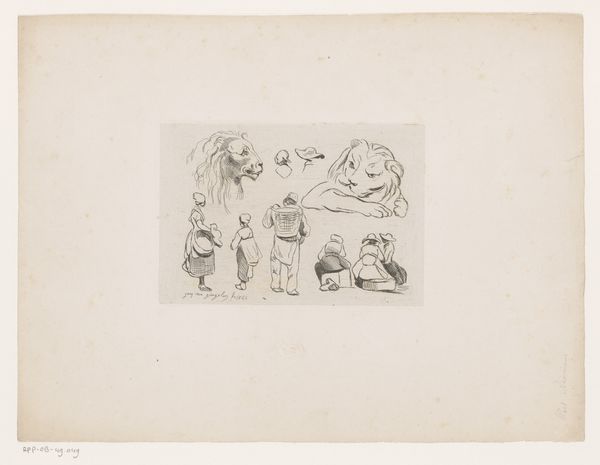
drawing, graphite
#
drawing
#
animal
#
graphite
#
realism
Dimensions: height 347 mm, width 473 mm
Copyright: Rijks Museum: Open Domain
Curator: This delightful drawing is entitled "Studies van eenden en eendenkuikens", dating from 1865 to 1878 and attributed to Jules Laurens. What catches your eye first about it? Editor: The scattered arrangement of the ducklings. It has a somewhat scientific aesthetic. A quick and light gesture that creates a pleasing asymmetry with an ethereal gracefulness, wouldn’t you agree? Curator: Absolutely, I think the positioning offers us insight into the study of natural history illustration as a field that gained prominence during that era. These sketches are reminiscent of scientific catalogues; reflecting how people were striving to understand and document the natural world, thus attempting to organize their world and surroundings through representation. Editor: Agreed. The artist seems to be interested in capturing form and shadow, as well as volume, primarily through careful modelling, without worrying so much about backgrounds or any narrative element for that matter. The light graphite markings are doing so much here; so skillfully used to portray all these charming little fowl. Curator: And that speaks to an interesting question. Laurens was a painter of Orientalist scenes. So it’s intriguing to consider why and where he was drawing these ducklings during this time in his artistic practice. The rise of ornithology in Europe made such images increasingly fashionable and sought-after. Were these destined for the scientific journals of the day, or just sketches from life intended to delight a collector of such things? Editor: Good question, I’d be fascinated to know the intent, to see what he was attempting. Though even without that information, the arrangement of the ducklings invites the eye to playfully dart across the scene in no prescribed way; their subtle, quiet presence rewards the prolonged viewing of the curious spectator. Curator: Well, whatever its purpose might have been, it serves now as a charming insight into both the natural world, and how it was perceived and studied at the time. Editor: Indeed. It reminds me of how effective simple compositions and close studies can really be, providing a unique viewpoint that can alter your perception.
Comments
No comments
Be the first to comment and join the conversation on the ultimate creative platform.
